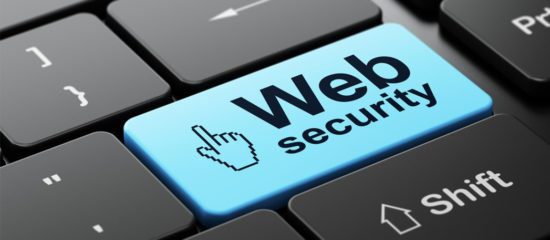Online shopping is more popular than ever, and that’s why branding is critically important. Establishing a brand is more than just designing a logo – brands embody quality, aesthetics, corporate values, and a commitment to customer satisfaction.
Crafting a branding strategy takes time, investment, and years of customer input to produce a stellar product that endures in the long term. Therefore, it’s critically important to guard your brand against counterfeiters that want to slap your logo on an inferior product for quick profits.
Many cheap knock-offs can be found in street markets and bazaars, however, the counterfeiting industry has largely moved online. While you can’t police what happens on the street, you can take measures to protect your brand online with the power of web scraping.
Counterfeit goods are a growing problem
Counterfeit goods lower the value of their legally branded counterparts. Being made with cheaper materials, lower quality controls, and unfair labor practices, knock-offs degrade the marketplace and deceive customers.
Counterfeit goods now stand at 3.3% of global trade, according to a 2019 report by the Organisation for Economic Co-operation and Development (OECD). Goods that make up the most significant share of seizures include footwear, clothing, leather goods, electrical equipment, watches, medical equipment, perfumes, toys, jewelry, and pharmaceuticals. According to the Federal Research Division of the Library of Congress in the United States (2018), counterfeiting is the largest criminal enterprise in the world, and international sales of counterfeit and pirated goods are estimated at $1.7-4.5 trillion per year. That’s higher than illicit drugs or human trafficking!
Web scraping is a powerful solution to counterfeiting
In the past, businesses attempted to combat the issue by targeting unauthorized traders individually. Besides being difficult to find all infringers, this strategy was time-consuming and expensive.
Thankfully, web scraping is a more efficient solution that combines highly sophisticated data extraction techniques with automation to continuously monitor the online presence of a brand. Besides tracking the actual brand itself, web scraping has evolved in sophistication to enable the monitoring of specific products.
How web scraping works to protect brands
Web scraping uses “robots” or scripts that crawl the web and extract data from hundreds of websites in seconds. This raw data is then cleaned up or “parsed” into a format that experts can analyze to extract insights.
The web scraping process has evolved to where it is now accessible by businesses of all sizes with the use of ready-to-use tools. While the process may differ from business to business, the standard procedure typically includes the following steps:
1. Identify counterfeiting websites
The first step is to find websites selling products using your branding. This can be as easy as conducting an internet search using keywords or images.
2. Customize scraping code with keywords/search terms and images
The next step requires that you adjust the script to the website’s layout and any settings such as HTTP headers or proxy settings. This is because all websites have a different HTML structure. Since the scraper uses HTML code to extract data, you must match the script to the format of the page.
The next step is to define keywords to be used by the script in order to find the data for extraction. Common examples include terms such as “RayBan Aviators”, “Gucci Ophidia Bag” or “Rolex Dive Watch”. Along with the use of keywords, pictures can be used to identify the items being counterfeited.
3. Extract the data and compile the information
Web scraping applications typically return data in a format that cannot easily be read. In order to render it into a human-friendly format, the data must be processed prior to analysis.
Once the data is organized into a readable format, it must be sorted by products and vendors before moving on to the next step.
4. Optional: File Digital Millennium Copyright Act (DMCA)
Depending on your product, you may be able to file a DMCA (Digital Millennium Copyright Act) complaint.
The DMCA protects businesses against unauthorized traders selling counterfeited products online. This U.S.-based copyright law addresses the rights of owners of copyrighted material that believe their rights under U.S. copyright law have been infringed.
Despite being a U.S. law, the DMCA also protects businesses in other jurisdictions by cooperating with web hosting and copyright regulators in most countries across the world. In addition, the DMCA also addresses the internet service providers that operate servers where the infringing material is found.
5. Submit website removal requests to search engines
Following the complaint(s) made in the previous step, the next move is to request search engines remove the infringing websites from their index. Search engines like Google and Bing have policies and support systems in place that can help you make sure that internet users do not find counterfeited items unless they have a direct link.
Common web scraping challenges
Web scraping is a complex process that requires detailed technical knowledge to be effective. Some common challenges you may experience include server bans, changing website layouts, and restricted geo-locations.
Residential proxies are a solution to all three problems. By leveraging the power of proxies, you can distribute requests and navigate complex layouts while remaining anonymous.
Counterfeiters know that you are on the lookout! Proxies are your weapon of choice when scraping the critical data you need to find infringers and remove them from search indexes.
On the other hand, you might look for a dedicated Web Scraper API. These will let you avoid the usage of proxies and the technical know-how that would be required. Picking an out-of-the-box solution works best if you haven’t got the tech teams to manage scraping in-house.
Conclusion
Web scraping is the most technologically advanced way to find unauthorized traders – and it’s more cost-effective and accessible than ever before.
The opinions expressed in this post belongs to the individual contributors and do not necessarily reflect the views of Information Security Buzz.



